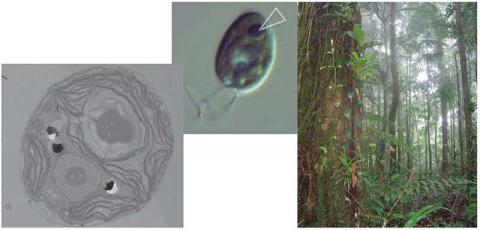We investigate plant molecular, physiological and environmental processes which regulate productivity and CO2 sequestration, and aim to improve the operating efficiency of the primary carboxylase, Rubisco, and match water availability to use. Stable isotope methods are used to evaluate the origins and regulation of diverse photosynthetic carbon concentrating mechanisms (CCM). These include the C4 pathway and Crassulacean Acid Metabolism (CAM), as well as the biophysical CCM in algae and hornworts, where our particular focus is on the molecular determinants of the chloroplast pyrenoid. Against a background of natural community diversity, our work increasingly translates via experimentation and fieldwork into resilience in cropping systems and the promotion of food security and equality. Projects include:
Food security: sustainability and equality in crop production systems
Through the Global Food Security Interdisciplinary Research Centre, our efforts are focussed on improving crop productivity and nitrogen use via major global challenge initiatives. Our goal is to deliver female empowerment through improved food, nutrition and education for farming communities in India and Africa.
Defining the algal chloroplast pyrenoid
Molecular interactions control Rubisco packaging into the pyrenoid, and regulate CCM efficiency in the model alga Chlamydomonas, and inform our strategies to re-engineer photosynthesis in crop plants.
Carbon assimilation and hydraulic constraints in C3, C4 and CAM systems
Water supply from root to leaf is essential for sustaining photosynthetic carbon assimilation and sequestration. Ultrastructural and biochemical modifications in CAM and C4 systems (succulence, bundle sheath, CCM) represent energetic costs and hydraulic benefits. Our current focus is to relate stomatal sensitivity to hydraulic continuity, being measured and modelled for food and biomass crops, particularly those with CAM.
Epiphyte environmental interactions and climate change
Climate change is threatening fragile ecosystems. We sample bryophytes in Antarctica and the tropical montane (cloud) forests of South America, the Caribbean and South East Asia, using stable isotope hydrology to predict past and future climatic impacts.





